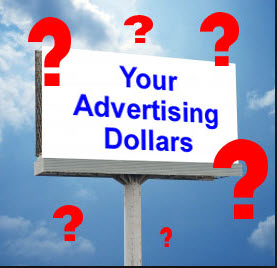Obviously, you're in business to make money. In order to do that, you need customers to buy your goods and services. Here's how signage can help.

Signs as Advertising
A few years ago, a sign manufacturer performed a study of its clients to find out whether their signs were bringing in customers. The businesses surveyed were a year or less old and the surveys were conducted within 30 to 45 days after the installation of a new sign. Thousands of shoppers were asked, "How did you learn about us?"
The results, shown in Table 1, clearly demonstrate that the signs attracted half of the start-up businesses’ new customers – more than any other form of advertising the businesses used and even more than their word-of-mouth referrals.
|
Table 1: How did you learn about us?
|
| Number of Customer Responses |
| On-Premise Sign |
Word of Mouth |
Newspaper |
Yellow Pages |
TV |
Radio |
| 1,234 |
820 |
212 |
139 |
32 |
38 |
| Percentage by Category |
| 50% |
33% |
9% |
6% |
1% |
1% |
Naturally, as your business becomes more established, more of your sales will come from repeat customers and fewer will be directly due to your sign. But that does not mean the sign has become unimportant. On the contrary, you must constantly remind your regular customers that you are there. Even more importantly, studies show that on any given day, as many as 35% of the people passing your business have never seen it before and could become first-time customers because of your sign.
Increasing Profits
The University of San Diego conducted a study to determine the economic value of on-premise signage. Table 2 shows the average increase in sales revenue that resulted from signage improvements. [1]
|
TABLE 2 - Average Increase in Sales Revenue
|
| Signage Change |
Fast Food
|
Pier One Imports
|
| Add one monument sign |
9.3% |
|
| Add large pole sign (144 sq. ft.) |
15.6% |
8.6% |
| Add chain identity to plaza identity sign |
|
7.7% |
| Addition of two new directional signs |
|
8.9% |
| Replaced storefront wall sign with larger sign |
|
7.7% |
Let's assume you own a typical family clothing store and add a new, better-designed sign to the business. Here's how it could impact your bottom line:
| Your annual sales |
$1,757,486 |
| Cost of goods sold |
61.8% |
| Gross Profit Margin |
38.2% |
| Operating expenses (includes other expenses of 1.5%) |
36% |
| Income taxes (estimated at 35%) |
0.8% |
| Income after taxes |
1.4% |
| After tax profit ($1,757,486 x 1.4% or) |
$24,604 |
A 7% increase in sales created by the addition of a needed sign, without increasing operating expenses, would cause the following change in profit:
| New sales at 7% ($1,757,486 x .07) |
$123,024 |
|
Gross Profit from new sales ($123,024 x 38.2% Margin Contribution)
|
$46,995 |
| Net Profit (Assumes 35% taxes) |
$30,547 |
| Total Profit (Original Profit $24,604 plus New Profit $30,547) |
$55,151 |
With a small, 7% bump in sales your profit could jump from $24,604 to $55,151. That's an increase of over 124%! Increasing profits is one way that signs improve your bottom line. Another way is by decreasing expenses.
Cutting Costs
A number of surveys have been conducted before and after installing signage to determine effectiveness. One of these, from late 1996, involved a Los Angeles auto dealership. Three previous auto dealers had failed at the location. The new owner, Aztec Motors, spent much time, energy and money improving the building and lot.
Once renovations were complete, the new owner invested $7,400 in replacement signage that entailed one wall and one double-faced pole sign.
A survey found the new signage, not the renovations or other advertising, was responsible for a minimum of ten new walk-in customers per week, resulting in at least six additional sales per week.
It took less than a month for the new signs to pay for themselves, and the owner was able to reduce his advertising budget from $16,000 to $4,000 per month an annual savings of $144,000.
As part of your advertising you're probably considering one or more of the following: TV, radio, newspapers, Internet, direct mail, etc. The most basic way to evaluate the cost effectiveness of these or any marketing method is the cost per 1,000 exposures. Here's how business signs measure up to other media.
The price and life expectancy of signage varies widely depending upon the type, but let's assume you invested in signage costing $16,500 that should last seven years. If your business is located on a street with 60,000 people passing each day, the cost per 1,000 exposures would be only 11 cents.
The same $16,500 spent on outdoor advertising (i.e., any sign that is not appurtenant to the use of the property, a product sold, or the sale or lease of the property on which it is displayed) for 1,000 exposures would cost $0.83. A similar expenditure in newspaper advertising would cost you $1.57, while television advertising for 1,000 exposures would cost $6.60.
If you'll remember from Table 1, only 1% of first-time customers come in because of your television ad. But 50% come in because of your sign. If you're spending only 11 cents per 1,000 exposures to get that 50%, that's a good use of your money.
Article by International Sign Association
[1] Figures from The Economic Value of On-Premise Signage, a study conducted by the University of San Diego School of Business Administration.